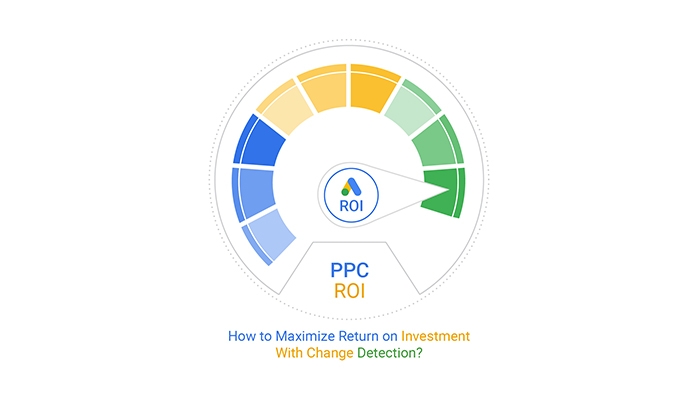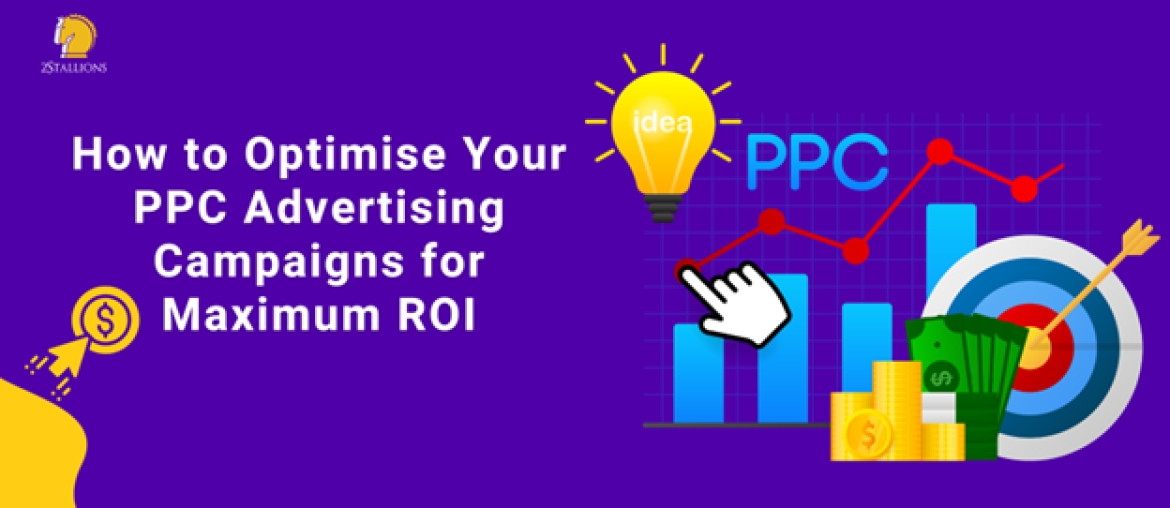Tips for maximizing ROI with pay per click networks
Buy CPC Traffic | Buy Display Ads | Exclusive traffic sources | Buy Push Ads | Popunder ADS | Buy Native Ads | Buy Preroll Ads

Buy CPC Traffic | Buy Display Ads | Exclusive traffic sources | Buy Push Ads | Popunder ADS | Buy Native Ads | Buy Preroll Ads
Are you looking to boost your return on investment (ROI) and drive more targeted traffic to your website? Pay per click (PPC) advertising can be an effective strategy to achieve these goals. By utilizing PPC networks, you can reach your target audience, increase brand awareness, and generate leads and sales.
However, to truly maximize your ROI with PPC, you need a well-planned and strategic approach. Simply throwing money into PPC campaigns without a clear strategy is a recipe for wasted budget and disappointing results.
In this article, we will guide you through the steps to optimize your PPC campaigns, increase your conversion rates, and ultimately maximize your ROI.
First and foremost, it is crucial to define your goals and objectives. What do you want to achieve through PPC advertising? Do you want to increase sales, generate leads, or raise brand awareness? Having clear goals will help you tailor your campaigns and measure your success accurately.
What is a pay per click network?
A pay per click network, also known as a PPC network, is an online advertising platform that allows advertisers to bid on keywords or phrases relevant to their target audience. The network then displays the advertiser's ads on websites and mobile apps that are part of the network. These ads are often displayed in the form of text, banners, or popunder ads.
When a user clicks on the ad, the advertiser pays a certain amount, typically based on a bidding system, to the network. This payment model is commonly referred to as pay-per-click (PPC), as advertisers only pay for the number of clicks their ads receive.
Pay per click networks provide a cost-effective way for advertisers to reach their target audience and drive traffic to their websites or landing pages. They offer various targeting options, such as geographical targeting, demographic targeting, and interest-based targeting, allowing advertisers to reach specific user segments.
Advantages of using a pay per click network:

Immediate results: PPC campaigns can be set up quickly, and ads can start driving traffic and generating leads almost instantly.
Control over budget: Advertisers can define their daily or monthly budget and adjust it based on the performance of their campaigns. They only pay when someone clicks on their ads.
Targeted advertising: PPC networks offer advanced targeting options that allow advertisers to reach their desired audience accurately.
Measurable results: Advertisers can track the performance of their campaigns in real-time, including impressions, clicks, conversions, and return on investment (ROI).
Overall, a pay per click network is a powerful advertising tool that can help advertisers maximize their ROI by driving targeted traffic to their websites or landing pages. By utilizing the various targeting options and closely monitoring campaign performance, advertisers can optimize their PPC campaigns for better results.
Understanding the concept

Maximizing your return on investment (ROI) with pay per click (PPC) networks requires a solid understanding of the concept. PPC networks are online advertising platforms that allow advertisers to display their ads on search engine results pages (SERPs) and other relevant websites.
When a user clicks on an ad, the advertiser pays a fee to the network. The goal of PPC advertising is to drive targeted traffic to a website and convert those visitors into customers, ultimately generating a positive ROI.
To maximize your ROI with PPC networks, it's important to understand various key components:
1. Keyword research: Identifying the right keywords is crucial for a successful PPC campaign. Conduct thorough research to determine which keywords potential customers are using to search for products or services similar to yours. Use keyword research tools to uncover high-volume and low-competition keywords that are relevant to your business.
2. Ad targeting: PPC networks offer advanced targeting options to ensure your ads reach the right audience. You can target based on location, demographics, interests, and more. By narrowing down your target audience, you can increase the likelihood of attracting qualified clicks that are more likely to convert.
3. Ad copy and design: The ad copy and design play a crucial role in attracting and engaging users. Craft compelling and relevant ad copy that highlights the unique selling points of your products or services. Use strong action words and include a call-to-action to encourage users to click on your ad.
4. Landing page optimization: Once a user clicks on your ad, they should be directed to a landing page that is optimized for conversions. Ensure that your landing page matches the messaging of your ad and provides a seamless user experience. Use clear and persuasive headlines, engaging content, and a prominent call-to-action to increase conversions.
5. Monitoring and optimization: To maximize your ROI, it's essential to continually monitor and optimize your PPC campaigns. Track key metrics such as click-through rates, conversion rates, and cost per conversion. Use this data to identify areas for improvement and make necessary adjustments to your campaigns.
By understanding these key components and implementing best practices, you can effectively maximize your ROI with PPC networks. Continuous testing, monitoring, and optimization are essential to stay ahead of the competition and achieve long-term success in the world of PPC advertising.
The benefits of pay per click advertising
Pay per click (PPC) advertising has become one of the most effective and popular methods of online advertising. With PPC, advertisers only pay when a user actually clicks on their ad, making it a cost-effective way to drive traffic to their website. There are several benefits to using PPC advertising, including:
Highly targeted traffic: PPC allows advertisers to target specific keywords and demographics, ensuring that their ads are seen by the right audience. This targeted approach increases the chances of conversion and maximizes the return on investment (ROI).
Immediate results: Unlike other forms of online advertising, PPC campaigns can be set up and launched quickly. Advertisers can start driving traffic to their website almost instantly, resulting in immediate visibility and potential sales.
Flexible budgeting: With PPC advertising, advertisers have full control over their budget. They can set a daily or monthly spending limit, ensuring that they don't overspend. Additionally, PPC platforms provide detailed reporting and analytics, allowing advertisers to track their spending and optimize their campaigns for better results.
Remarketing options: PPC networks often offer remarketing options, which allow advertisers to target users who have previously visited their website. This enables advertisers to re-engage with potential customers and increase the chances of conversion.
Access to a wide audience: PPC networks have vast reach, allowing advertisers to tap into a global audience. Advertisers can choose to target specific countries, regions, or even cities, ensuring that their ads reach the right audience in the right location.
Various ad formats: PPC networks offer a variety of ad formats, including text ads, display ads, and popunder ads. This allows advertisers to choose the format that best suits their campaign goals and target audience.
In conclusion, pay per click advertising offers numerous benefits for advertisers. Its ability to target specific audiences, provide immediate results, and offer flexible budgeting makes it a valuable tool for maximizing ROI. By utilizing the various ad formats and remarketing options available, advertisers can effectively reach a wide audience and increase their chances of converting leads into customers.
Increasing your website's visibility
When it comes to maximizing your ROI with pay per click networks, increasing your website's visibility is crucial. The more visible your website is, the more chances you have of attracting targeted traffic and generating leads. Here are some strategies to increase your website's visibility:
Optimize your website for search engines:
Use relevant keywords in your website's content and meta tags.
Create high-quality and unique content that is valuable to your target audience.
Ensure your website has a user-friendly design and is mobile-responsive.
Improve your website's loading speed to provide a better user experience.
Utilize social media platforms:
Create profiles on popular social media platforms like Facebook, Twitter, and LinkedIn.
Regularly post engaging content and interact with your audience to build a loyal following.
Use relevant hashtags to reach a wider audience.
Run social media ads to target specific demographics and increase visibility.
Collaborate with influencers and industry leaders:
Identify influencers and industry leaders in your niche.
Reach out to them for collaborations such as guest blogging or social media takeovers.
By associating with reputable individuals, you can gain exposure to their audience and increase your website's visibility.
Guest blogging on authoritative websites:
Research authoritative websites relevant to your industry.
Reach out to them with well-crafted pitches for guest blogging opportunities.
By providing valuable content on reputable websites, you can increase your website's visibility and attract targeted traffic.
Invest in pay per click advertising:
Use pay per click networks like Google AdWords, Bing Ads, or social media advertising platforms to display targeted ads.
Create compelling ad copies and select relevant keywords to ensure your ads reach your target audience.
Monitor and optimize your pay per click campaigns regularly to maximize your ROI.
By implementing these strategies, you can significantly increase your website's visibility, attract more targeted traffic, and ultimately maximize your ROI with pay per click networks.
Targeting specific keywords

One of the most important factors in maximizing your ROI with pay per click networks is targeting specific keywords. By choosing the right keywords to target, you can ensure that your ads are seen by the right audience and increase the likelihood of conversions.
Here are some tips for targeting specific keywords effectively:
1. Research keywords
Start by conducting thorough keyword research to identify the most relevant and valuable keywords for your campaign. Use tools like Google Keyword Planner and SEMrush to find keywords with high search volumes and low competition.
2. Group keywords
Organize your keywords into relevant groups to make it easier to create targeted ad campaigns. Grouping keywords allows you to create specific ad copy and landing pages tailored to each group, increasing the chances of conversion.
3. Create compelling ad copy
Write compelling ad copy that includes your targeted keywords. By using the keywords in your ad copy, you increase the relevance of your ads to the search query, improving the click-through rate and quality score.
4. Optimize landing pages
Ensure that the landing page you direct users to after clicking on your ads is optimized for the targeted keywords. This can improve the user experience and increase the chances of conversion.
5. Monitor and refine
Regularly monitor the performance of your keywords and make adjustments as needed. Remove underperforming keywords and focus on the ones that are driving the most conversions and ROI.
By targeting specific keywords effectively, you can reach the right audience and maximize your ROI with pay per click networks. Remember to continuously analyze and optimize your campaigns to ensure ongoing success.
Measuring and tracking campaign performance
Measuring and tracking the performance of your pay per click (PPC) campaigns is crucial to maximizing your return on investment (ROI). By effectively monitoring your campaign's key metrics, you can identify areas of improvement and make data-driven decisions to optimize your PPC strategy.
There are several important metrics that you should track to assess the success of your PPC campaigns:
Click-through rate (CTR)
The percentage of people who click on your ad after viewing it. A high CTR indicates that your ad copy and targeting are effective.
Conversion rate
The percentage of visitors who complete a desired action, such as making a purchase or filling out a form. Tracking conversion rates helps determine if your campaign is driving valuable actions.
Cost per click (CPC)
The average amount you pay for each click on your ad. Monitoring CPC helps you understand the cost-effectiveness of your campaign and can guide budget allocation.
Return on ad spend (ROAS)
A measure of how much revenue you generate for each dollar spent on advertising. ROAS helps evaluate the profitability of your campaigns.
Quality score
A score assigned by the PPC platform that reflects the relevance and quality of your ad. A higher quality score can lead to higher ad rankings and lower CPC.
In addition to these metrics, it's important to track and analyze other data points like keyword performance, ad position, and audience demographics. This information can provide insights into which keywords drive the most conversions, the effectiveness of different advertising strategies, and the characteristics of your target audience.
To effectively measure and track your campaign performance, you can utilize PPC analytics tools provided by the PPC networks. These tools allow you to create custom reports, set up conversion tracking, and continuously monitor the performance of your campaigns. By regularly analyzing the data and making adjustments based on the insights gained, you can optimize your PPC campaigns and drive higher ROI.
How to choose the right pay per click network
When it comes to maximizing your return on investment (ROI) with pay per click (PPC) campaigns, choosing the right PPC network is crucial. With so many options available, it can be overwhelming to make a decision. However, by considering the following factors, you can ensure that you choose the PPC network that aligns with your goals and yields the highest ROI.
1. Understand your goals

Before diving into the vast sea of PPC networks, it is important to clearly define your goals. Ask yourself: What are you trying to achieve? Are you looking to increase brand awareness or drive more conversions? Understanding your goals will help you narrow down your options and select a PPC network that can best meet your objectives.
2. Evaluate the network's reach and audience
Take a close look at the reach and audience of the PPC networks you are considering. Look for networks with a large user base and a demographic that aligns with your target audience. The more targeted and relevant the audience, the more likely you are to achieve higher ROI.
Consider factors such as the network's geographic targeting options, device targeting capabilities, and any additional demographic or interest-based targeting features available. Ensure that the network's targeting options align with your campaign objectives and audience preferences.
3. Analyze the network's ad formats and placement options
Another essential factor in choosing the right PPC network is evaluating the ad formats and placement options available. Different networks offer various ad formats, such as text ads, display ads, video ads, or native ads. Consider which ad formats are most effective for your industry and target audience.
Additionally, assess the network's placement options. Some networks offer a wide range of websites and platforms for ad placement, while others may be more limited. Choose a network that provides opportunities for your ads to be displayed in relevant and prominent positions.
4. Research the network's targeting and optimization features
Targeting and optimization features can greatly impact the success and ROI of your PPC campaigns. Look for a network that offers robust targeting options, such as keyword targeting, location targeting, and audience targeting.
Additionally, research the optimization features that the network provides. This might include automated bidding, conversion tracking, or A/B testing capabilities. These features can help you fine-tune your campaigns and maximize your ROI.
5. Consider the network's pricing structure
Pricing is another critical factor to consider when selecting a PPC network. Evaluate the network's pricing structure, including the cost per click (CPC) rates and any additional fees or minimum spend requirements.
Compare the pricing of different networks and consider how it aligns with your budget and expected ROI. Remember, the cheapest option may not always be the best choice if it doesn't deliver the desired results.
Network A
High
Text, Display, Video
Keyword, Geolocation, Audience
Variable CPC
Network B
Medium
Text, Display
Keyword, Geolocation
Fixed CPC
Network C
Low
Display, Native
Keyword, Interest-based
Variable CPC
By carefully considering these factors and comparing various PPC networks based on their reach, ad formats, targeting options, pricing, and other relevant features, you will be able to choose the right pay per click network that can effectively maximize your ROI.
Considering your target audience
One of the key factors in maximizing your ROI with pay per click networks is understanding and considering your target audience. When running pay per click campaigns, it's essential to know who your target audience is and what their needs and preferences are.
First, you need to identify your target audience. Who are the people that are most likely to be interested in your product or service? Are they young professionals, parents, or tech-savvy individuals? Understanding the demographics and psychographics of your target audience will help you create more effective advertisements that resonate with them.
Once you have identified your target audience, you can tailor your pay per click campaigns to meet their needs and preferences. For example, if your target audience is young professionals, you might want to focus on platforms like LinkedIn or Twitter, where they are more likely to spend their time. On the other hand, if your target audience is parents, platforms like Facebook or Pinterest might be more effective.
Additionally, you should consider the specific interests and behaviors of your target audience. What are their hobbies, interests, or buying habits? This information can help you create more relevant and personalized advertisements that will attract their attention and drive higher click-through rates.
Another important aspect to consider is the language and tone of your advertisements. Depending on your target audience, you might need to adapt your messaging and tone to resonate with them. For example, if your target audience is tech-savvy individuals, using technical jargon and a more professional tone might be appropriate. However, if your target audience is more casual or laid-back, a more conversational and informal tone might be more effective.
In conclusion, understanding and considering your target audience is vital when it comes to maximizing your ROI with pay per click networks. By knowing who your target audience is, tailoring your campaigns to their needs and preferences, and adapting your messaging and tone accordingly, you can create more effective advertisements that drive higher click-through rates and ultimately increase your ROI.
Evaluating network features and reach
When considering your pay per click (PPC) advertising strategy, it is essential to evaluate the features and reach of different networks to ensure maximum return on investment (ROI).Features
Each PPC network has its own set of features that can impact your advertising campaign and overall results. Here are some key features to consider:
Targeting options:
Look for networks that offer various targeting options, such as location targeting, device targeting, and demographic targeting. This allows you to reach the most relevant audience for your business, increasing the chances of conversions.
Ad formats:
Consider the type of ads that each network supports. Some networks only offer text ads, while others provide image, video, or interactive ads. Choose a network that aligns with your preferred ad formats and creative requirements.
Ad placement:

Examine where your ads will be displayed within the network. Some networks have a wide range of partner websites and search engines, while others may have limited reach. Select a network that offers placements on platforms that are relevant to your target audience.
Reach
The reach of a PPC network refers to the number of users or websites the network can reach with your ads. When evaluating network reach, consider the following:
Network size:

Determine the size of the network in terms of the total number of users or websites. A larger network can potentially expose your ads to a larger audience, increasing the chances of generating clicks and conversions.
Geographical coverage:
Check if the network has a global reach or if it is limited to specific countries or regions. If you have a local or regional business, it is important to choose a network that can effectively target your desired audience.
Conclusion
By thoroughly evaluating the features and reach of different PPC networks, you can make an informed decision and choose the right network to maximize your ROI. Consider your targeting options, ad formats, and ad placement, as well as the network's size and geographical coverage. A well-chosen network can significantly enhance the outcomes of your PPC advertising efforts.
What is pay per click advertising?
Pay per click advertising is a model of online advertising where advertisers pay a fee each time their ad is clicked. This is a way to buy visits to your site rather than attempting to “earn” those visits organically.
How can I maximize my ROI with pay per click networks?
To maximize your ROI with pay per click networks, you can start by targeting the right keywords and optimizing your ad copy to attract the right audience. You should also regularly monitor and adjust your campaigns, test different strategies, and utilize tracking and analytics tools to measure the success of your campaigns and make data-driven decisions.
Which pay per click networks are the most effective?
The effectiveness of pay per click networks can vary depending on your target audience and advertising goals. However, some of the most popular and effective pay per click networks include Google Ads, Bing Ads, and Facebook Ads. It's important to evaluate your options and choose the network that aligns with your specific needs and objectives.
What are some common mistakes to avoid when using pay per click networks?
When using pay per click networks, it's important to avoid common mistakes such as targeting broad keywords that are not relevant to your business, neglecting to set a budget and monitor your spending, failing to track conversions and performance metrics, and not optimizing your landing pages for conversions. It's important to carefully plan and execute your pay per click campaigns to avoid wasting your advertising budget.
How long does it take to see results from pay per click advertising?
The time it takes to see results from pay per click advertising can vary depending on various factors such as the competitiveness of your industry, the quality of your campaigns, and your budget. Generally, you can start seeing some results within a few days or weeks, but it may take several months of continuous optimization and refinement to achieve optimal results and maximize your ROI.
Buy CPC Traffic | Buy Display Ads | Exclusive traffic sources | Buy Push Ads | Popunder ADS | Buy Native Ads | Buy Preroll Ads
2022-2024 @ How to maximize your ROI with pay per click networks